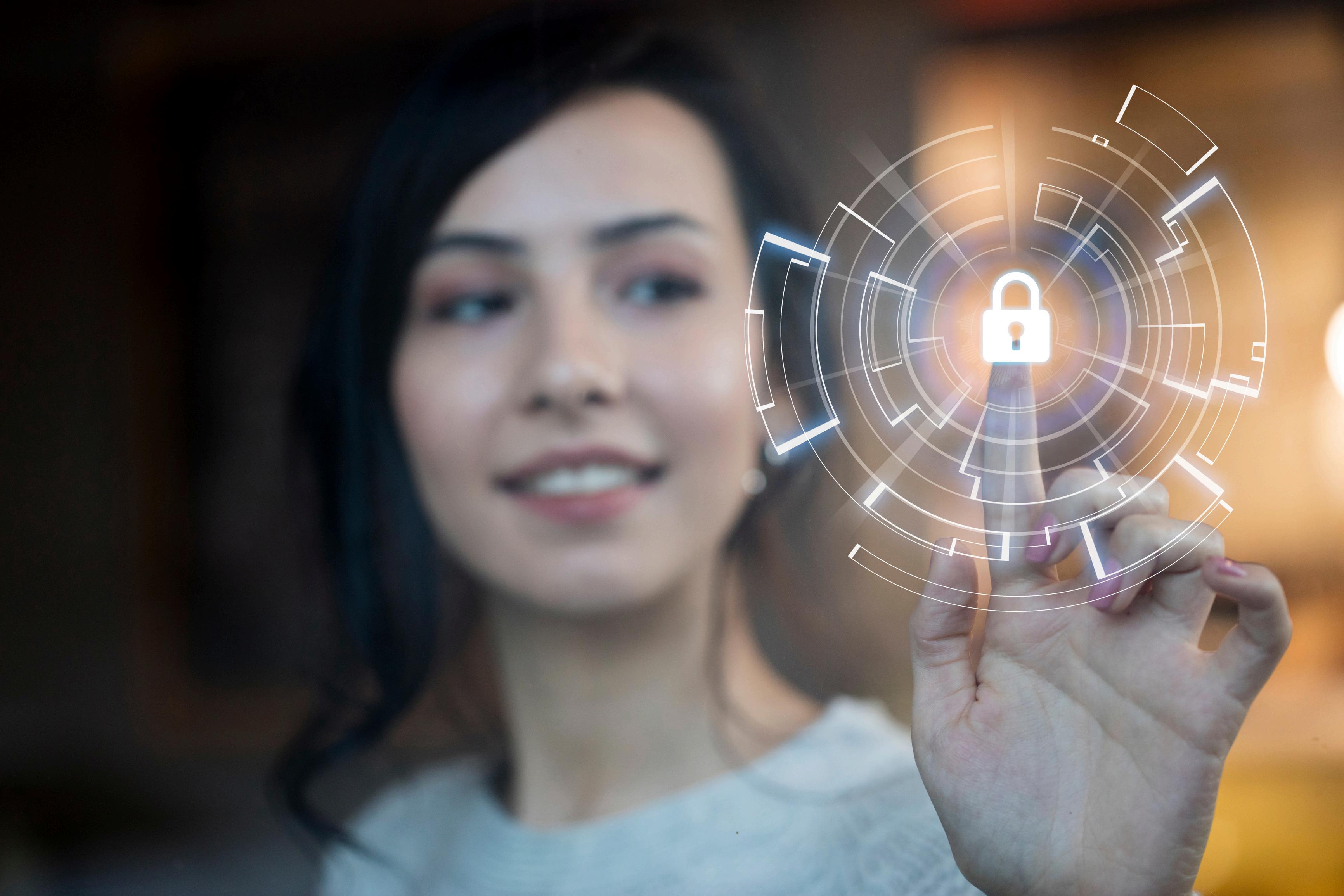






BSIA Connect | Issue 3 | Summer 2024
Produced in-house by the British Security Industry Association

Editor: Andrew Cooper
Assistant Editor: Chelsea Peplow
Design: BSIA Communications
Contributors: David De Santiago, OCS Group | Phil Turner, 24Hr Solutions | Darran Hannon, Dormakaba | Jo Shear, Lolipop | Melissa Ahmed, Techwuman
Thank you: Ben Mockford, BSIA | Graham Johnson, National Vetting Solutions | Ben Knott, FGH Solutions | Pauline Norstrom, Anekanta | Caitlyn Turner, Lodge Service

Last quarter saw the first ever British Standard code of practice that focuses on the ethical use and deployment of facial recognition technology (FRT), developed on recommendations by the BSIA and released by the British Standards Institute (BSI) The code of practice, Facial recognition technology ethical use and deployment in video surveillance-based systems – Code of practice (BS 9347:2024) - has been developed by the BSI, in its role as the UK National Standards Body, to allay concerns by helping organisations build public trust with its proliferation, prompting concerns about safe and ethical use
The BSIA’s leadership on the issue began in 2020 with the setting up of a Special Interest Group dedicated to the issue, publishing the industry-first ethical and legal guide on facial recognition, Facial Recognition Technology: A Guide to ethical and legal use. This was the first guide of its kind, following recommendations on responsible use of Artificial Intelligence (AI) by the Organisation for Economic Cooperation and Development (OECD), and encompassed useful terms and abbreviations, ethical uses, and more The guide had a specific focus on distinctive application types verification (is it you?) and identification (who is it?) and was designed for both industry experts and the general public to understand the framework, whilst matching key messaging with that of the UK Government’s Surveillance Camera Commissioner, with its aim to ensure FRT does not cause harm or discriminate against any persons in either a public or private setting. Having been acknowledged by the UK Government, this guidance was the initial template for developing the new standard. Being at the forefront of its creation, we are pleased to see this major world-first code of practice being released The use of FRT has not come without its own challenges, whether that has been down to the accuracy of the technology, or how and where it is deployed
So what does this groundbreaking standard in such a fast moving environment hope to achieve? The standard, written for the industry, by the industry, will now allow the legal and ethical usage of this technological advancement in improving the safety and security of people, property, and places Addressing the ethical challenges faced by those using AI technology, its foundation is based on six overarching AI principles of ‘trustworthiness’, namely governance and accountability, human agency and oversight, privacy and data governance, technical robustness and safety, transparency and explainability, diversity, non-discrimination, and fairness. The origin of the principles of trustworthiness comes from the OECD, EU, and alignment with UK AI regulatory principles The standard sets out to build trust with those that develop, use, and are subject to its use It is applicable to the whole supply chain, beginning with an assessment to determine the need to use FRT, to its procurement, installation, and appropriate and continued use of the technology To avoid confusion, the standard also provides a clear delineation between the types of FRT deployment.
Upon release of the guide, the Chair of the BSIA’s AI & Biometrics Special Interest Group, Pauline Norstrom, highlighted the importance of understanding that the FRT code of practice is different to other standards for AI and biometrics, as ‘ a non-technical code of practice that operationalises the principles for trustworthy AI (ethical AI) through the entire value chain, making it easy for industry to implement transparently with clear governance and accountability, and arguably with potentially lower impacts, risks and costs Crucially, the standard contains a metaphorical ‘stop button’ to cease use if impacts cannot be mitigated It also frames FRT as an AI technology that aligns with the definition of AI in international standards and new or pending regulations.’
Over the years, privacy groups, industry stakeholders, and other interested parties have asked many relevant questions on the appropriate and proportionate use of such technology As an association, we are confident that this code of practice will instill trustworthiness in the use of FRT by setting out key principles covering the whole process, from assessing the need to use it, to ensuring its continued operation remains fit for purpose and justified. It is no exaggeration to say that the release of the code of practice is a significant moment in the journey towards the ethical use of this AI biometric technology in this country Also, as it is the first of its kind in the world, it shows that British Industry is leading the way in this work with a procedural standard written for developers, integrators, deployers, and stakeholders of FRT
Mike Reddington Chief Executive British Security Industry Association








Artificial Intelligence has undoubtedly been one of the buzzwords of the past 12 months, but it is not a flash in the pan that will fade into obscurity It is here to stay and is something on which companies are placing considerable emphasis.
DAVIDDESANTIAGO,GROUPAIANDDIGITALSERVICES
DIRECTOR,OCSGROUP
There will be a rapid change from how AI is currently used in security to how it will be used in future AI will quickly transform the sector beyond recognition with the opportunities it will present Whether considering a security guard ‘ on the ground’ or someone monitoring situations in a control room, capability will increase Detection will move on from the human brain and basic tools looking for issues, to complex machine learning patterns that are capable of countless calculations in the blink of an eye
The world of AI in security has recently been taking a lot of its developmental cues from the cybersecurity landscape Much of the latter is about proactively
understanding what potential threats look like, flagging them and detecting them before they can do any harm In the cybersecurity use case, a multitude of different AI techniques are used to detect malicious or unusual behaviour or traffic patterns Lots of techniques and models, such as neural networks, machine learning, genetic algorithms and computer vision currently exist, but we are now entering the exciting era of generative AI.
AI and digital services in security take a similar tack with profiling. It understands how people act and builds patterns of their behaviour, raising concerns when things aren’t right. Where previously this would be done by human recognition alone, it can now be done by generative and multimodal AI.
With multimodal AI, you can now process a wide variety of inputs, including text, images, and audio to create more accuratedeterminations. In essence, it provides you with the ability to mimic the human brain while interlinking various sensory inputs, making the insights garnered richer and more precise

It creates a new playground for technology to operate in a much smarter way For example, generative AI can be used to create deepfake voice and video There has already been a case in Hong Kong where a company lost $25million due to a member of its finance team being tricked into thinking they were on a video call with the company’s CFO.
The camera is no longer a pair of static eyes. Instead, it’s an ultrasmart machine that can see when someone is looking at a lock for too long or what their focus – and subsequently their intent – is as they linger that little bit too long in a surveyed area.
AI in security acts as a behaviour detector in the same way a polygraph acts as a lie detector Instead of focusing on the voice which can be altered to feign innocence, it focuses on things like infrasounds and low frequency vibrations over which the subject has no control
Another area in which AI in security will allow controllers to tap into different models and assign threat risk profiles is by combining the different sources
The focus will be on data science and modelling expertise on the types of data the controller needs to use and the correlations that can be inferred from them The key to these approaches is the ability to build these models by acting like a detective, accumulating cues and signals from various sources

Innovation is pervasive and ubiquitous. Vehicle manufacturers developed AI models which were able to detect fatigue in drivers and prevent them from driving.

These approaches are now being deployed in other areas to prevent people under the influence of alcohol or narcotics from entering public spaces. With the rapid advancement of AI and with an growing number of solutions in that space, it is vital to keep an eye on adjacent industries and have a strong scouting capability to help you incorporate these new techniques into your value chain.
Cameras placed in rear view mirrors can again detect the dilation of the pupils using infrared technology. If high level or signs of fatigue are detected, they can physically prevent the car from moving. The person cannot then deliver the company’s services, which reduces insurance premiums for the company.
While there are privacy concerns about the use of cameras, entry into the gig economy undoubtedly requires the employee to enter a profiling sy They are accepting jobs on beh companies and the companies ne undertake ‘know your customer’ processes
The consent to their identity checked in these ways is all laid out terms and conditions when they with the job provider The data shared, it is collected solely aroun business requirement for safety
While these technologies may sound like something from a sci-fi film, it’s important to note that they are already available and, in some cases, already in place The next wave of forward-thinking companies will take a view of every single aspect of the value chain with the intention of digitising each segment
AI will be at the centre of this, while the latest advancements in generative AI will act as an accelerator At the moment, it has no shades of grey which is why we’re not seeing Robocop in shops and banks just yet; the AI doesn’t understand escalation points and judgement calls. Instead, it is still very black or white. Think of a person entering a bank saying they have a gun and then pulling it from their pocket. A robot guard could act in a split second and eliminate the perceived threat. But if that perceived threat is a toy gun, it would not know the difference. This might take us to the level of AI known as ‘Emotional AI’, with some startups already burgeoning in that space. As with all breakthrough technology advancement, we tend to overestimate its immediate impact and underestimate the long-term impact.
Eventually, AI will come to understand these nuances which will then allow us to infer the right type of outcomes. We’re not there yet, but one thing is sure: we will get there.
Companies with established futures need to start thinking laying their AI-based foundations and investing now, being open to models and techniques that can be reused safely for security There are lots of innovations happening in AI in other areas, all of which could have an impact in security This is why it is so important to monitor market shifts so closely
A strategy needs to be put in place around the exploitation of an AI domain Selfcontained environments require human interaction and assessment that means the red button can be pressed and systems shut down.
This AI expert needs to have an understanding of technology and logic algorithms, and core security aspects to stop in when needed.
AI is still extrapolations of machine learning. Increasingly, its use in security will involve the codification of what security means to its end users, as this will be totally different in whichever sector it is being used to protect. Users will create an AI definition specific to their environment which is where the power of machine learning proves itself.
It provides fewer choke points when its effectiveness may be challenged by clogging, unlike the human-only world It can handle increases in traffic at anticipated times, such as airports and stations when events take place But xpert is needed to translate these ic use cases; it’s no good menting a threat detection system oped for a supermarket in the O2’s ground station before a concert
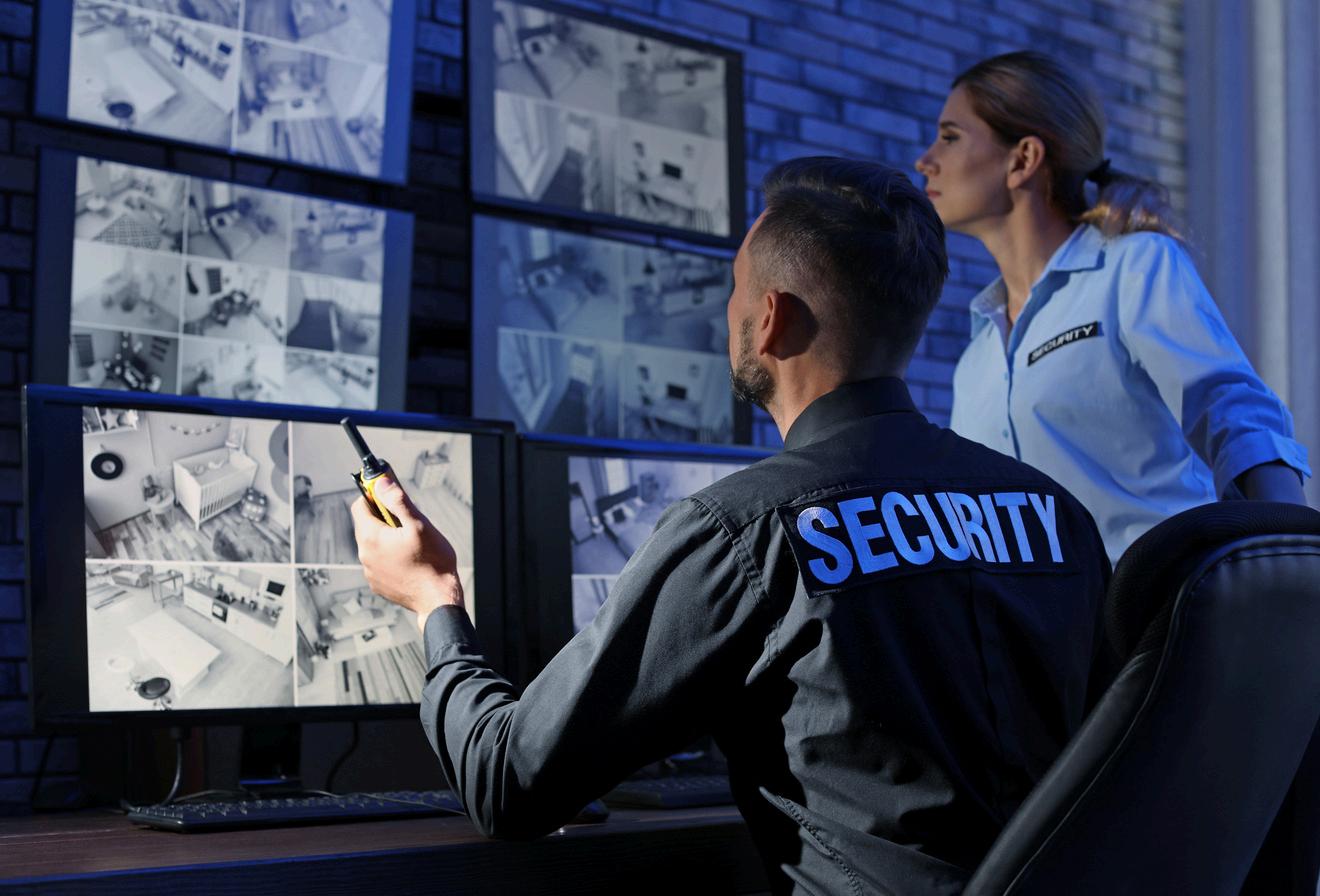
ontrol room and the expert of the will understand coverage of as but also the machine learning thms to build these risk profiles Its to be an exciting ride



As the world of security continues to evolve, we are leveraging cutting-edge technologies like Artificial Intelligence (AI) and Biometrics to revolutionise depot management and vehicle security. Our commitment to thought leadership is evident in our pursuit of pioneering solutions that not only enhance security but also transform the industry as a whole PHILTURNER,24HRSSOLUTIONS
One of the most significant benefits of AIpowered security protocols is the ability to improve accuracy in detecting and responding to security threats By analysing data from multiple sources and using machine learning algorithms to identify patterns and anomalies, AIpowered systems can detect potential threats more quickly and accurately than traditional security methods.
Another benefit of the 24hr Solutions Group AI-powered security protocols is the ability to reduce false positives. By using complex algorithms and machine learning models, the AI-powered system can eliminate false positives, reducing the
reducing the risk of false alarms and unnecessary responses. This can help to improve the efficiency and effectiveness of security protocols, allowing organisations to respond quicker and effectively to real threats
Despite the many benefits of AI-powered security protocols, there are also some challenges that organisations must be aware of One of the biggest challenges is the need for high-quality data Without high-quality data, AI-powered systems may not be able to learn and adapt effectively, reducing their ability to detect and respond to potential threats. Another challenge is the potential for cybersecurity risks, as AI-powered systems can introduce new vulnerabilities that hackers can exploit

There are also some limitations to consider when implementing AI-powered security protocols and AI integrated companies. For example, the lack of transparency in AI-powered decisionmaking processes can be a challenge for organisations that require greater transparency in their decision-making processes Additionally, the need for human oversight for AI-powered security protocols can be a challenge in situations where human oversight is not possible or practical
There is a the challenge of integrating AI-powered security protocols with existing systems. This can require significant changes to existing infrastructure and processes, which can be a significant challenge for organisations that are already invested in traditional security methods.
However, by carefully considering these challenges, organisations can ensure that their AI-powered security protocols are implemented efficiently.

AI-powered security protocols are an important tool for organisations looking to improve their security posture and reduce the risk of cyber attacks. By providing improved accuracy, reduced false positives, improved efficiency, and reduced costs, the AI-powered systems from The 24hr Solutions Group can help organisations achieve their goals more effectively and efficiently and unlike the traditional ‘in house methods’, the groups team of AI experts are aware of the challenges and limitations of implementing these systems, in order to ensure that they are implemented effectively and efficiently, giving the end client the bespoke solution they require, whilst reducing overheads.

Our new range of CVIT armoured vehicles is a testament to our commitment to innovation and excellence Produced by our group, these vehicles are equipped with advanced AI-powered monitoring systems, providing real-time data and analytics to ensure optimal performance. Our CVIT armoured vehicles are designed to provide maximum security and protection, minimum cost to build, while also incorporating cutting-edge technology to enhance their functionality, speed and reduce operating costs
At the heart of our operations lies the National Control Centre, a state-of-the-art facility that enables real-time monitoring and control over our clients' operations. Our AI-powered systems integrate seamlessly with our biometric verification technology, providing a robust and secure infrastructure that ensures optimal performance. The NCC then plays a pivotal role in the link between AI and human interaction. Managing the systems, being the human interface in a technological world.
As we look to the future, we recognise that AI and Biometrics will play a crucial role in shaping the world of security Our commitment thought leadership is evident in our pursuit of innovative solutions that not only enhance security but also transform the industry as a whole. By embracing these technologies, we can create a more secure, efficient, and effective approach to depot management and vehicle security.

tted to harnessing the onise industries around rfaced CVIT armoured ment to innovation and we're excited about the will bring, and we're ll continue to shape the
er of integrated security h a team of experts deliver comprehensive of our clients Whether vehicle security, custom or more, we're here to
ven by a shared mission: in the communities we that values innovation,



The security industry has witnessed numerous significant changes in recent years, with none more transformative than advancements in biometrics. As the demand for robust and reliable security measures escalates, biometric technology has emerged as a pivotal solution, offering unparalleled accuracy and convenience.
DARRANHANNON,DORMAKABA
In this increasingly vital sector, dormakaba, alongside our esteemed partners, stands at the forefront of innovation We are committed to implementing cutting-edge biometric solutions that not only enhance security but also streamline user experiences By integrating advanced technologies such as fingerprint recognition and facial scanning, we are redefining the standards of security and access control
At dormakaba, we harness the power of ground-breaking biometric technology to deliver comprehensive access solutions across a diverse range of sectors Our vast product portfolio includes advanced systems utilising fingerprint recognition
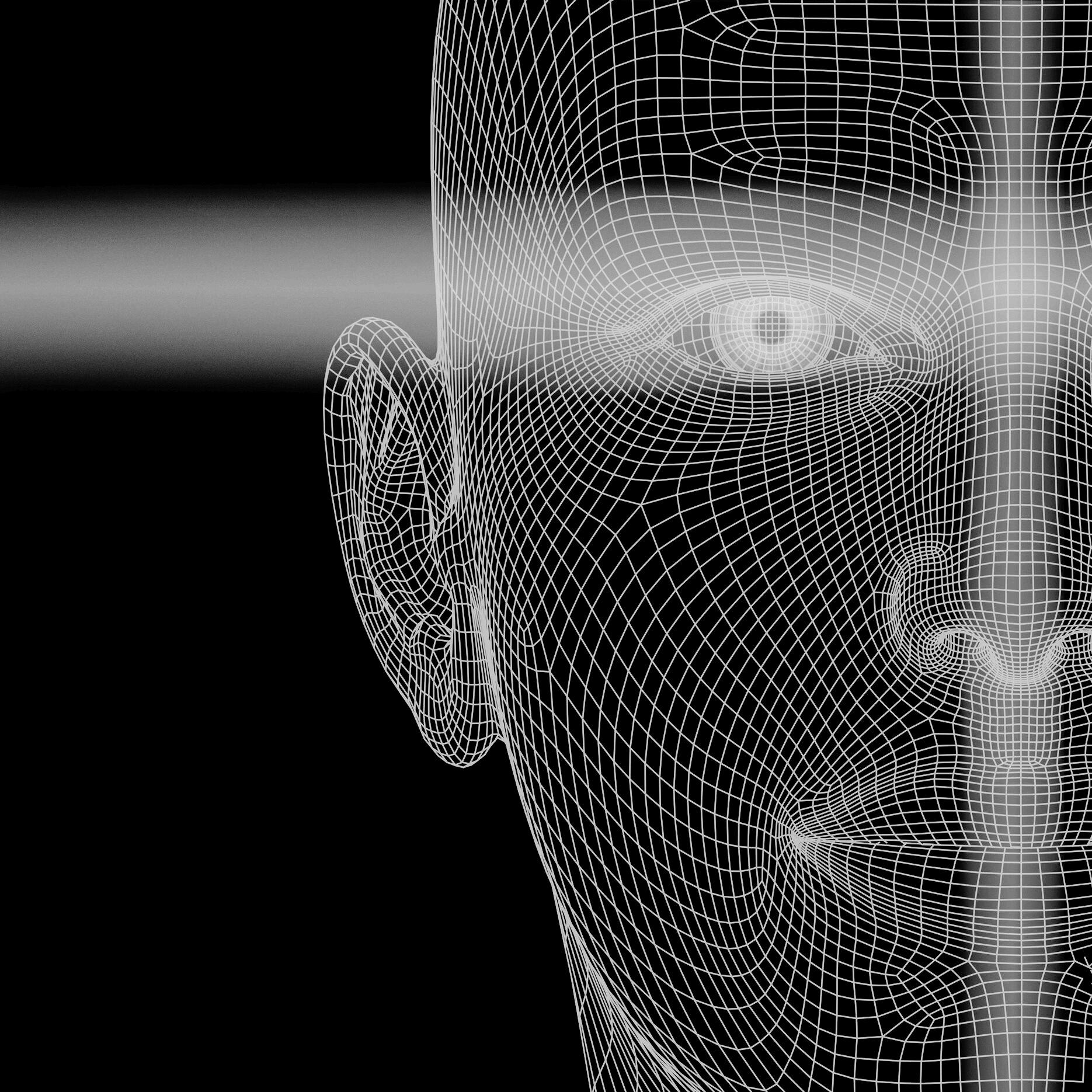
and facial scanning, ensuring top-tier security and seamless user experiences. These sophisticated biometric solutions are designed to meet the unique needs of various verticals, making them ideal for deployment in high-security environments such as airports, stadia, educational institutions, workplaces, and government and defence frameworks.
By implementing our state-of-the-art biometric systems, we enhance security protocols, streamline access management, and provide robust protection against unauthorised entry In airports, our biometric solutions facilitate secure and efficient passenger processing, while in stadia, they ensure the safety of large crowds through swift and accurate identification
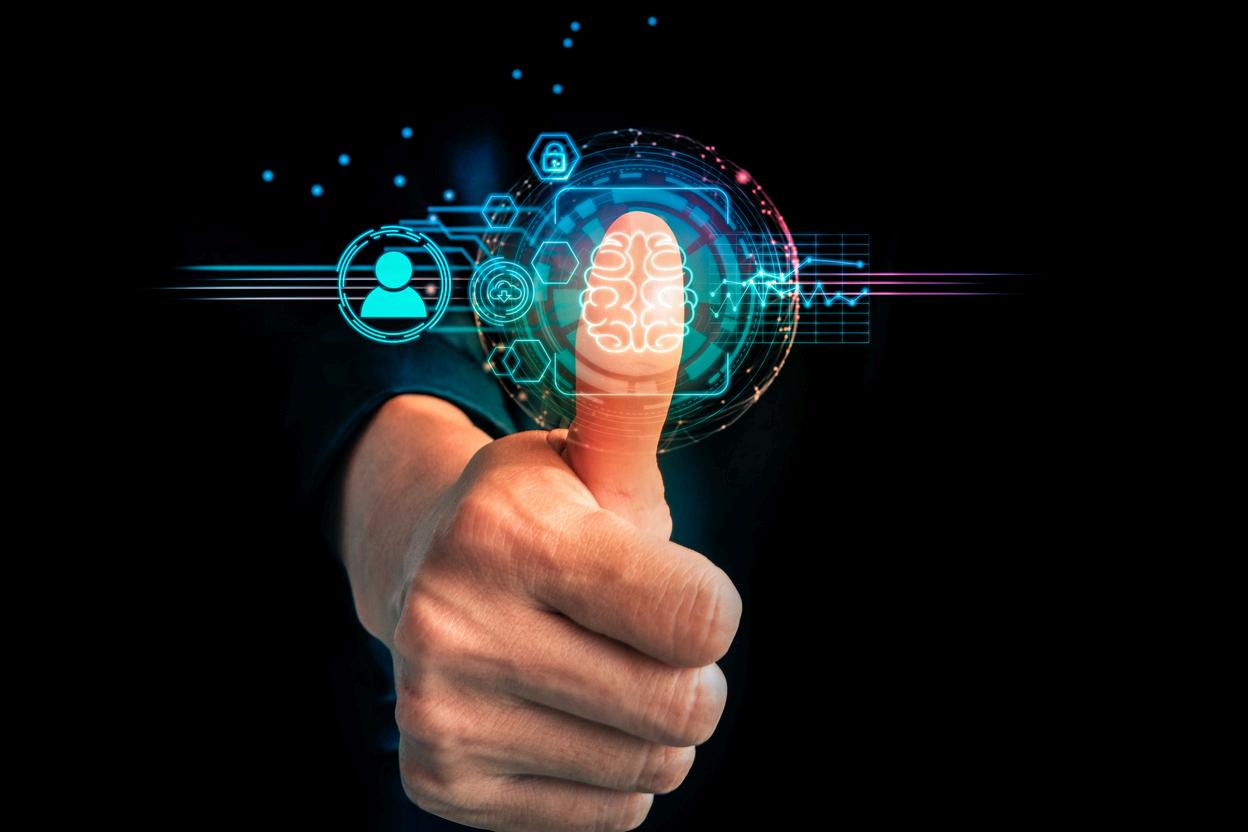
dormakaba's commitment to innovation and excellence in biometrics positions us as a leader in the security industry, driving the adoption of nextgeneration access solutions that are both reliable and userfriendly.
Educational facilities benefit from controlled access to sensitive areas, and workplaces enjoy improved security and attendance tracking. In government and defence buildings, our biometric technology provides the highest level of security for sensitive installations and critical infrastructure
dormakaba was delighted to announce a global commercial partnership with Touchless Biometric Systems (TBS) in the recent past to enhance our biometric portfolio. By taking this important step, both companies aim to better serve corporate customers who demand the highest standards in biometrics-based access control systems



Biometrics offer unparalleled security and convenience, making them an integral part of modern access control systems. The key advantage of biometrics is their ability to provide a seamless, non-intrusive security experience.
The trajectory of biometric technology indicates that it will only become more prevalent in our daily lives, revolutionising the way we approach security and access control. As advancements continue to unfold, the integration of biometrics into various sectors will enhance both security and user convenience. dormakaba is delighted to provide our expertise in this dynamic field, offering innovative solutions that meet the evolving needs of our clients Our commitment to excellence and cutting-edge technology ensures that we remain at the forefront of biometric advancements, helping to shape a future where secure and seamless access is the standard.


Having been using AI since late 2022, we know that just letting a bot loose on your marketing on its own is going to lead to disappointing, unsuccessful and potentially damaging results.
JOSHAER,LOLLIPOPLOCAL


Whilst in the bath, Jon had a brainwave about a client's message. And I was trying to create a LinkedIn status update about it. But I was struggling. I knew there was something interesting here but I couldn’t find the right angle.
The L assista Lolly S AI Lol with t knew w bath And th great a but wh It can i
All the LinkedIn gurus will tell you that you need to be ‘authentic’ if you want to achieve success, which brings me on to LinkedIn Comments and AI options which suggest replies and comments Underneath many posts, you can see LinkedIn’s two or three word suggestions for how you should reply
And then you can see several comments that have all chosen the same reply.
No thought has really gone into that
There are also third party tools that you can use to suggest replies and comments to a particular post. But I don’t think there are many people who can’t recognise an AI comment when they see one It will look nothing like any of the other comments on the thread
And, if you know the person concerned, it probably won’t sound like them either.
That matters! It's not authentic. It impacts trust

Do people care whether you’re using AI?
Business is embracing the possibilities of using AI And we are starting to see reports of potential and actual job cuts across a range of industries
So, what industries will AI be most likely to impact in the short term?
The consensus seems to be that marketing agencies, content creation, call centres, subject matter experts and low wage admin work are all in the firing line
But in reality, how well does that work out? Here's an example:

When we were planning our trip to the Security Event in April, I wanted to find out which of the BSIA members also had a stand at the event. I had the URL of the website page for the BSIA Members Directory And I had the URL of the website page for the list of exhibitors at the Security Event
I could have asked my assistant to compare the two lists but I hoped that this was a ‘grunt task’ that the AI would be able to do more quickly than a human

I was wrong After an hour of patient questioning and prompting to try to improve the answers, Claude finally admitted the truth.
It had been making assumptions because it couldn’t actually read URLs on the internet Basically, it had been telling me fibs and making out that they were facts Claude apologised profusely that it had wasted an hour of my time... sigh...
What did I learn? That you actually have to ask the AI if it has the ability to do a specific task before you ask it to carry out that task You can't assume that all AIs have the same skills
So I asked a different AI that does have the ability to read URLs on the internet. Sadly,ChatGPT was not very helpful. It huffed like a teenager and told me to go and do it manually myself!
After two wasted hours, I asked my human assistant to manually produce a list of the companies that were both members of the BSIA AND exhibiting at The Security Event.
It took her 30 minutes
Claude, Grok, Gemini, Co-Pilot, Perplexity - the generative AIs are proliferating like tribbles on the Starship Enterprise! Everyone seems to be developing their own AI. In theory, they’re like a supercompetent personal assistant on Warp Speed 9. You ask them to help you with a task and they spit your answer right back at you.
SURELY IT’S TIME TO FIRE YOUR MARKETING MANAGER ?
The internet is full of tools that seem to be able to create good content and tools that can create images So why not just give all content creation work to the AI? Not so fast my friend...
You can't just use the AI to replace a human by saying “write me an article about x ” and think you can just publish it straightaway
AI has all the technical skills to write content but it’s not reliable. It regurgitates stuff from the internet.
Remember the old adage garbage in, garbage out you cannot always be sure the AI has chosen the best texts to work from So the more AI there is, the more human we need to be in our editing.
Last year when AI first started to come onto the scene, some 'marketers' were rubbing their hands together with glee. They created websites with thousands of pages in a matter of just a few hours These poor quality websites were
stuffed with ads that made the websites’ owners money if they were clicked
Because they were big websites optimised for SEO, they started ranking at #1 on Google for buying keywords. Ad money and affiliate commissions were rolling in for the marketers But it was a poor user experience Of course it didn’t take too long for Google to smell a rat So Google developed the ‘helpful content’ algorithm update to fight back.
It started to stop showing pages that didn’t fit their definition of 'helpful' The ad clicks stopped, and those marketers have been crying about their lost revenue all over Twitter ever since
Google says she doesn't object to marketers using the AI BUT She wants to EEAT Experience, Expertise, Authoritativeness and Trustworthiness
The AI regurgitates based on what it has been fed. Humans are the ones who have the stories and the real life experiences to illustrate what we are trying to say in our blog posts and social media updates
Ask the best marketers and they will all tell you: AI content that has been tweaked by a human gives the best results In terms of traffic AND engagement
Our business coach told us the best way to think about it is “That job you think that AI is stealing from you? That's the job you didn't want to do anyway.”
Looking for innovative ways to embrace AI AND the human touch in your Security Marketing? Get in touch!
Meet the latest member to join the BSIA and to become part of the Association family. COMPILED BY BEN MOCKFORD


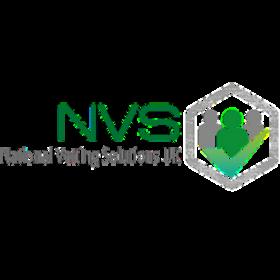
Meet Graham Jonson, Managing Director from National Vetting Solutions UK. They recently joined us as Associate members.
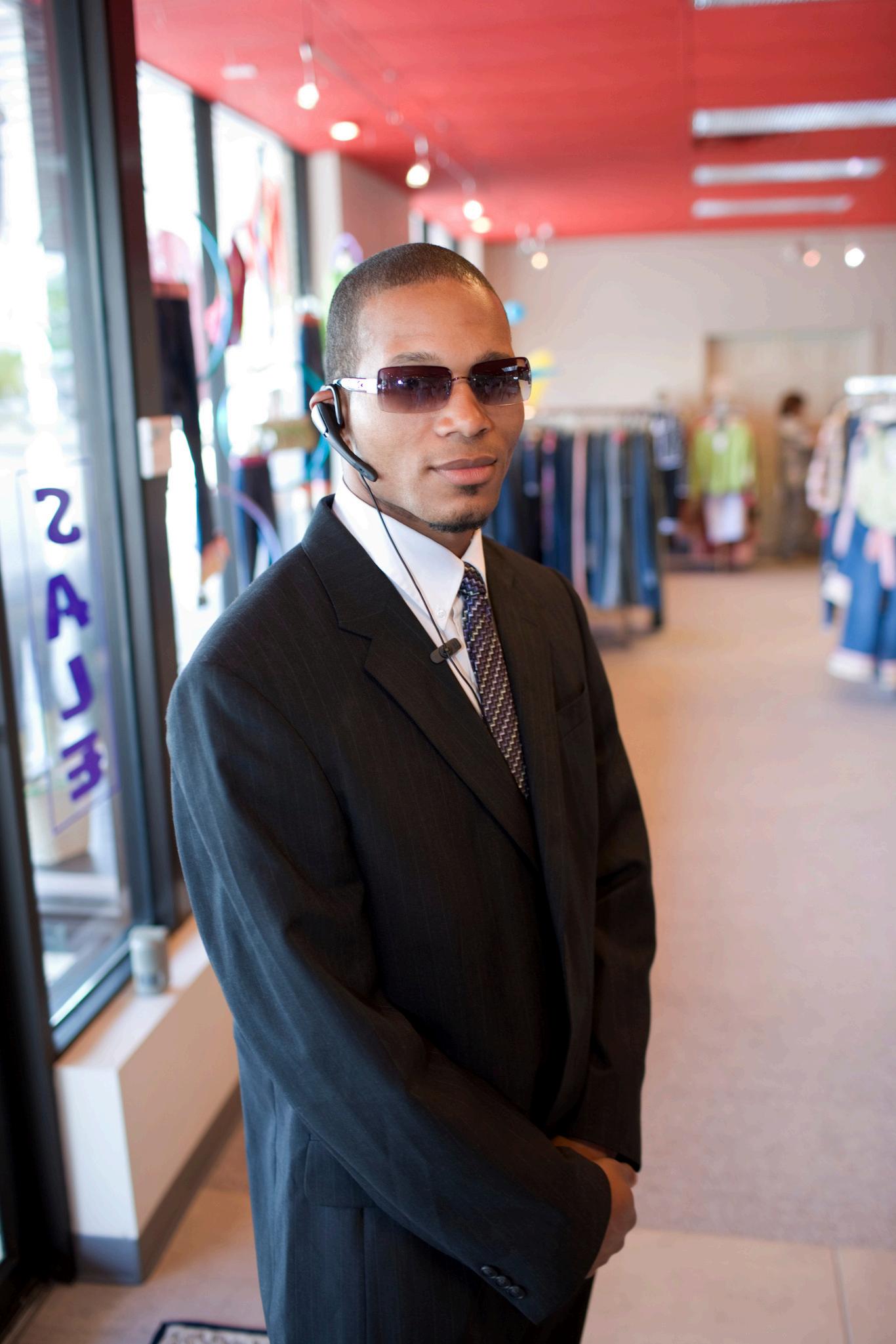
Our Security Background Checks protect your business and let you hire with confidence.
We deliver a truly managed Security Screening service Our dedicated specialist teams support your staff and candidates through the screening process, using our state of the art technology to validate information & documents, and our expertise to investigate ensuring full compliance
Our security screening solution offers a branded application portal with tailored document management and digital signature features to remove administration and achieve the fastest completion times possible We are one of the highest certified and accredited security vetting companies within the UK

We always knew about the BSIA and wanted to be part of an organisation that works within the security industry
The screening standard to BS7858 is very confusing, there is still a lot of companies out there that don’t understand how complex the standard is and how to achieve the vetting standard to BS7858:2019 standard. Also the right to work is getting very confusing since Brexit, taking a photo copy of a passport is an Identity check, not a right to work check, we supply full biometric right to work checks linked into the government framework and ensures that the hiring company does not get a minimum fine of £25K.
WHAT ARE YOU LOOKING FORWARD TO MOST OUT OF YOUR MEMBERSHIP?
We are looking forward to the networking events that are hosted throughout the year and I look forward British Security Awards

WHAT DO YOU THINK THE INDUSTRY WILL LOOK LIKE IN THE FUTURE IN TERMS OF ARTIFICIAL INTELLIGENCE?
I feel it’s the way forward, we work specifically with technology in all our security vetting’ ensuring the data we receive i correct and compliant.

Meet Ben Knott, Operations Director for FGH Security. They recently joined us as Principal members in the SOS Section

WHAT WOULD YOU SAY TO A STARTUP COMPANY COMING INTO THE INDUSTRY?
Make sure you get the foundations right, ensuring that you do the full BS7858 screening correctly which will ensure that you have done enough risk assessment on any new employees, and keeping your company’s reputation intact
COMPANY DO?
We keep people and assets safe. We employ around 2,500 Security Officers, Safety Stewards and Door Supervisors to some of the biggest and best brands in the world.
WHERE DID YOU HEAR ABOUT THE BSIA AND WHY DID YOU JOIN?
WHAT DO YOU FEEL WE AS AN INDUSTRY COULD BE DOING TO RAISE THE PROFILE OF OUR SECTOR?
I think we need more apprenticeships, better recruitment, and to become a career of choice for those in our industry. We need to be building on the good work some are already doing to drive out rogue operators, and we need to be working with the SIA and Home Office to create better more modern legislation that is fit for purpose – legislation that will allow our regulator to make the changes many of us want to see.
WHAT DO YOU THINK THE INDUSTRY WILL LOOK LIKE IN THE FUTURE IN TERMS OF ARTIFICIAL INTELLIGENCE?
I see AI as having such a powerful role in the future of security – aiding Security Officers to make better, faster decisions, and supporting them in their duties I think people wrongly assume that AI will replace the need for Security Officers, I think it will only enhance the role further
NVS are a Premier Security and Employee Screening Provider, supporting small, medium and large companies since 2006 specialising in: BS7858, BS8406, BPSS, Airport Airside, FCA Screening Standard and Bespoke Tailored Employee Screenings

We’ve known about the BSIA for many years, and contemplated joining on many occasions, it was only when we met with John & Mike at a security event in Dubai that we spoke in detail about the benefits and decided now was the right time to join
WHAT BENEFITS OF THE MEMBERSHIP ARE YOU LOOKING FORWARD TO TAKING ADVANTAGE OF?
Very much looking forward to collaborating with other BSIA Members to drive standards within the security industry, both here in the UK and internationally.
WHAT WOULD YOU SAY TO A START UP COMPANY COMING INTO THE INDUSTRY?
There are around 10,000 Security organisations in the UK, with the vast majority of revenue controlled by a handful of very large organisations To be successful you need to bring something new, a USP that others cannot easily replicate. Start in a local area and focus on driving standards there. If you do a good job, growth will come naturally. Be disciplined with what work you take on and never compromise on the safety and well-being of your team.
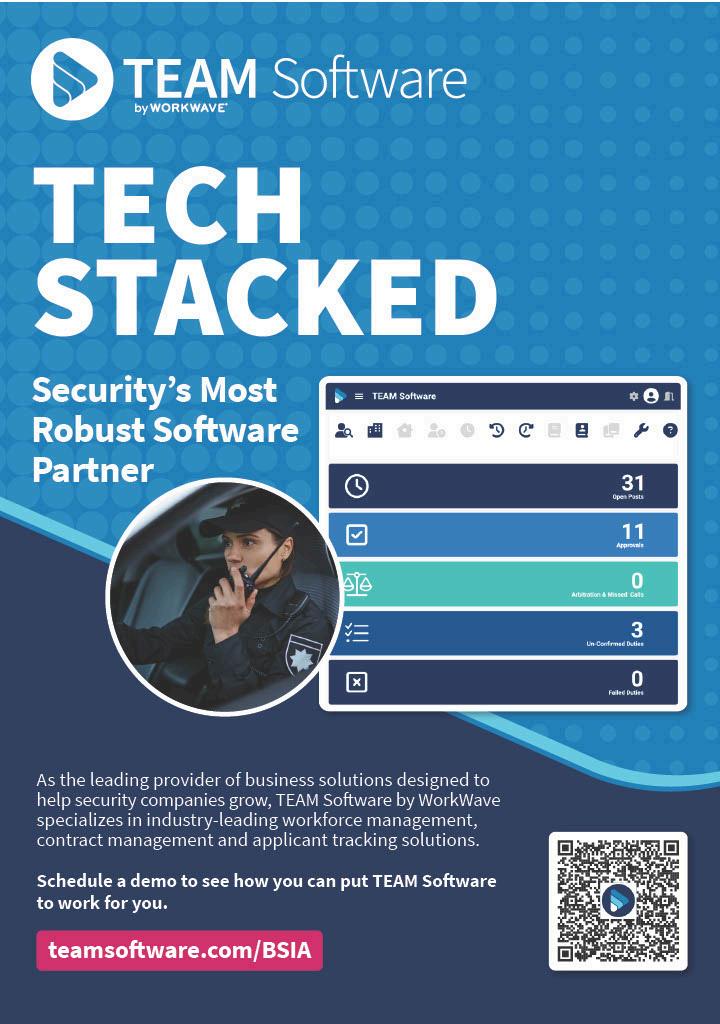

ue to the appointment of Martin Watson as the new Chair of the BSIA, Brett Gough has been elected as the next Chair of the Security Systems section following a section meeting.

Brett is a technical operational and strategic leader with over 17 years of effectively driving growth, performance, profitability, strategic relationships and planning of electronic security businesses “I am keen to support and represent our multiple members through utilising 27 years of industry experience coupled with boundless energy and strategic leadership. “

Similarly, in the Vacant Property Protection section, Gideon Reichental is stepping down as the Chair, to be succeeded by Richard Breckell.
Richard is the Operations Director for Mitie Fire & Security Systems He has 20 years’ experience within the facilities management, security and cleaning industry with tier-one service providers: Securitas, Compass Group and Mitie. Richard is also Chair of the BSI Revising Committee for BS8584,

“I have valued and enjoyed sitting on the Vacant Property Protection Committee, and learning from and with colleagues in the industry Being given the opportunity to lead our section is a great honour and one which I grasp with both hands.”

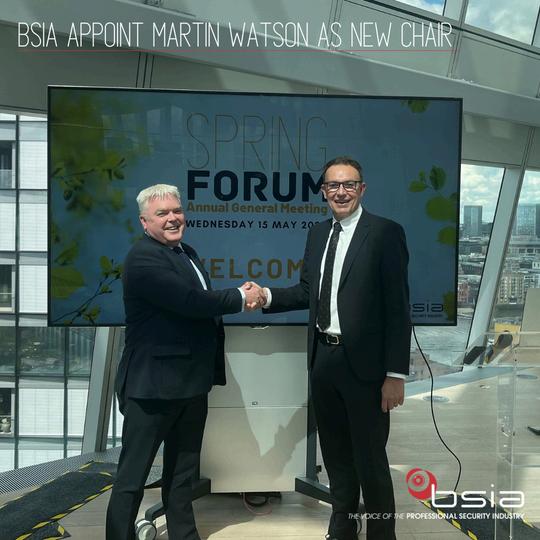
The BSIA appointed Martin Watson as its new Chair at the Association’s Spring Forum and Annual General Meeting in May.
With a background in fire, security and engineering spanning 40 years, Martin is currently Industry Liaison Director for BSIA members Mitie Fire & Security Systems Martin takes over from Simon Banks, who was appointed Chair in July 2018, overseeing significant changes over a six-year period Simon departs as the BSIA’s longest serving Chairman in its 57-year history.
In accepting the role, Martin said: “I am delighted to be taking over the reigns as Chair of this great Association and want to thank Simon, the BSIA team, the rest of the Board and all our contributing members for all their hard work. It is such important work that our member companies do and the BSIA works hard to provide valuable support to them. It is an ever-changing landscape we operate in though, so we still have much to do, and I am looking forward to addressing both the opportunities and challenges our industry faces ”
The first ever British Standard code of practice focusing on the ethical use and deployment of facial recognition technology (FRT), developed on recommendations by the BSIA, has been released by the British Standards Institute (BSI).
The code of practice, Facial recognition technology - Ethical use and deployment in video surveillance-based systems – Code of practice (BS 9347:2024) - has been developed by the BSI, in its role as the UK National Standards Body, to allay concerns by helping organisations build public trust with its proliferation prompting concerns about safe and ethical use. The BSIA’s leadership on the issue began in 2020 with the setting up of a special interest group dedicated to the issue, publishing the industry-first ethical and legal guide on facial recognition, which was acknowledged by UK Government and was the initial template for developing the new standard

The standard, written for the industry, by the industry, will now allow the legal and ethical usage of this technology advancement in improving the safety and security of people, property and places Addressing the ethical challenges faced by those using this artificial intelligence(AI) technology, its foundation is based on six overarching AI principles of ‘trustworthiness’, namely governance and accountability, human agency and oversight, privacy and data governance, technical robustness and safety, transparency and explainability, diversity, non-discrimination, and fairness. You can read more about the standard and find out how to purchase it on the BSIA’s new pages.

Two guides regarding BS 8418 have been issued by the BSIA this quarter; User guide to a BS 8418 Detector activated remotely monitored VSS system, an aidememoire that gives insight into the benefits of a remotely monitored detection activated VSS system, and A Basic Guide to BS 8418 VSS Systems for Installers, designed to provide a checklist of the main elements of British Standard BS 8418. and is aimed at VSS companies and their installation and maintenance engineers.
You can download the guides from our VSS guides page on the BSIA website.
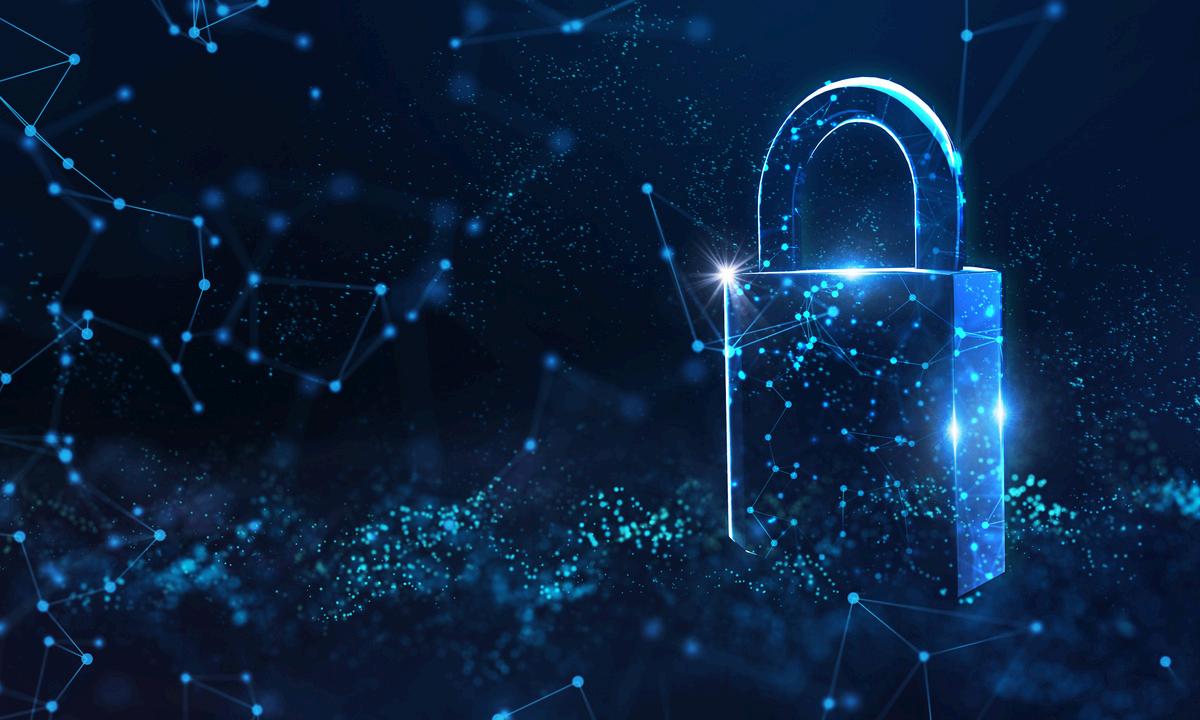
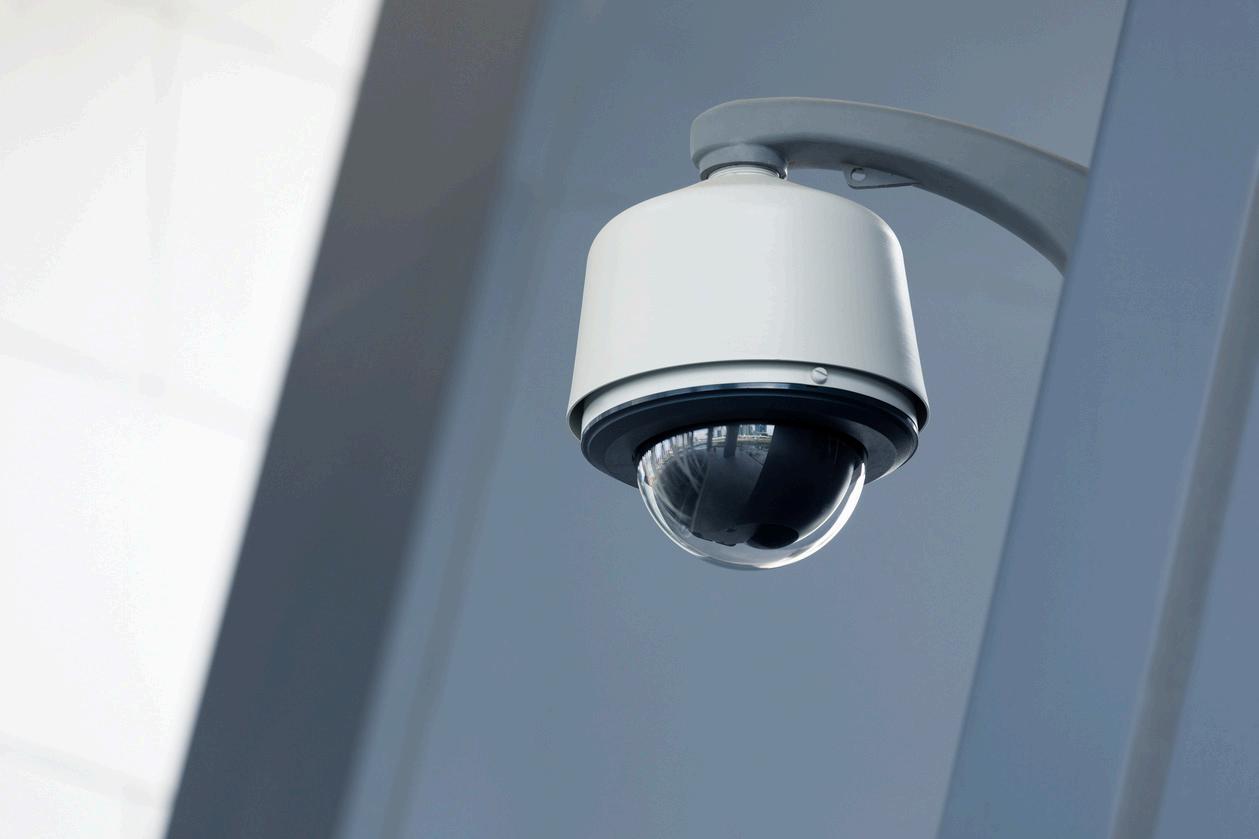
The BSIA has updated its manufacturers’ code of practice that recommends on the design, testing and manufacture of safety and security products with a cyber exposure, whilst aligning with major new UK legislation
Manufacturers of safety and security systems Cybersecurity code of practice, is based on international industry best practice regarding cybersecurity and refers to recognised guidance and standards applied to safety and security systems. Crucially, it aligns with UK’s consumer connectable product security regime, the UK Product Security and Telecommunications Infrastructure (PSTI) Act: 2022, which came into effect in 2024.
The code of practice, which underpins the BSIA manufacturers cyber assurance registration scheme, will assist in providing confidence throughout the supply chain promoting secure connection of products and services and can be accessed upon request from our Cybersecurity Product Assurance Scheme (CySPAG) website.
Updated guidance aimed at lone workers across retail,, hospitality and transport have been issued to aid the sector in ensuring ultimate safety for their staff.
To help these sectors make informed decisions when sourcing lone-worker protection products and services, these guides include information on best practices, employers' legal obligations and relevant British Standards, and can be accessed on our Lone Worker pages

We are regularly updating and creating new guidance based on industry best practice to aid you in your day to day worktake a look at our guidance pages today and keep an eye out on social media for updates!

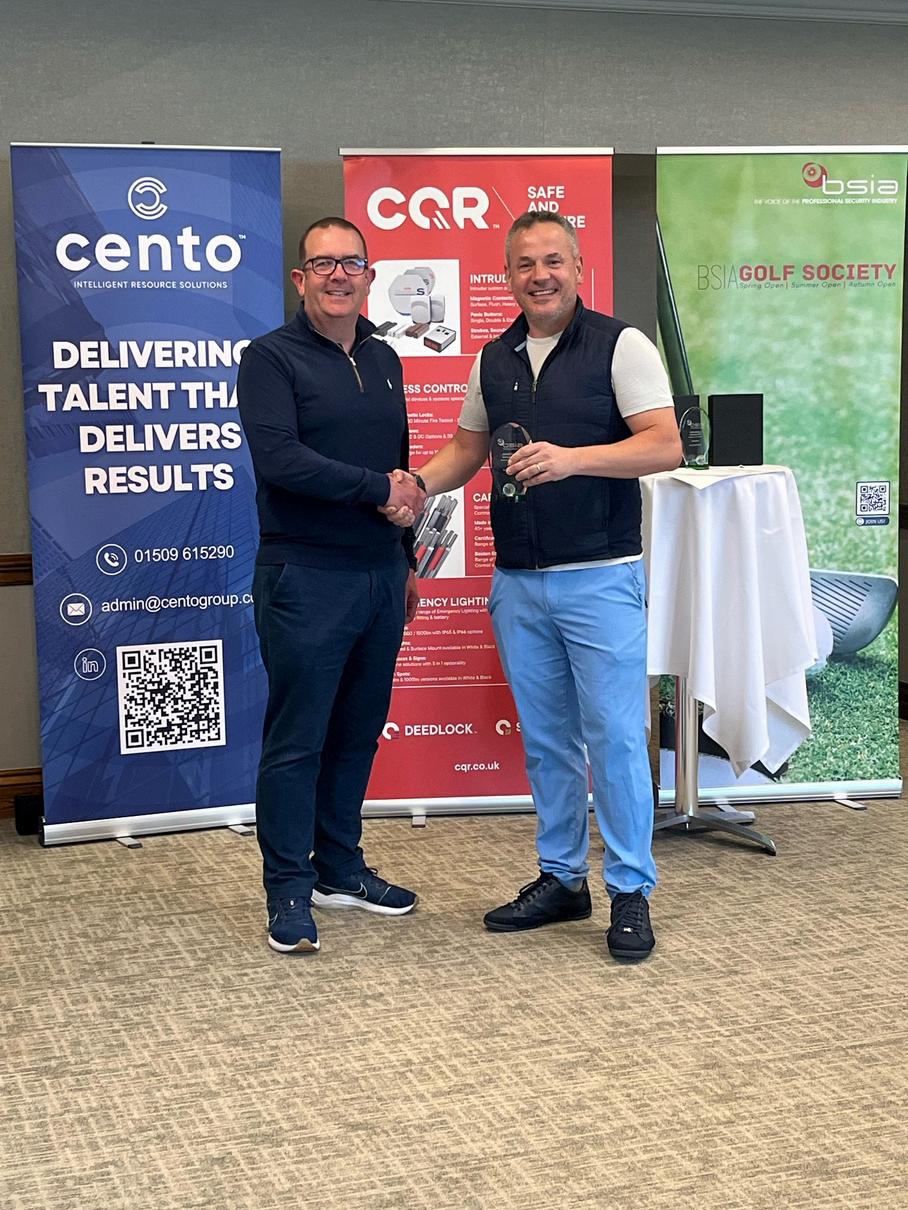
The BSIA hosted its inaugural Golf Society Day at Celtic Manor Resorts early this quarter
The BSIA Spring Open provided an opportunity for camaraderie and networking among like-minded individuals Business owners and colleagues connected while navigating the course, fostering relationships beyond the boardroom. Shared enjoyment and challenges bonded players and opened avenues for mutual growth.
The BSIA congratulates the winner, Alex Booth (AURA UK), who finished with an impressive 39 points
The BSIA would also like to thank the sponsors of this award, Cento. The CEO, Brett Ennals said, "As a company committed to promoting community engagement and upholding industry standards, this event sponsorship resonates deeply with our core values We understand the importance of networking events like this for building strong connections within the security industry Through our support of the BSIA and its initiatives, we aim to contribute to the advancement and professionalism of the sector while also demonstrating our active involvement in its growth"
The BSIA would also like to congratulate the winners of the secret-pairs awards which were achieved by Alex Booth and Masaya Kida (Optex-Europe) Special thank you to the sponsors of this award, Pyronix
Find out more about our Golf Society and our next event on 17 October on our website
Sam Downie, Managing Director at Mates in Mind, was delighted to award the Mental Wellbeing Initiative Award to the Westgrove Group at the BSIA Awards 2024. Mates in Mind extends their congratulations to everyone at the Westgrove Group.
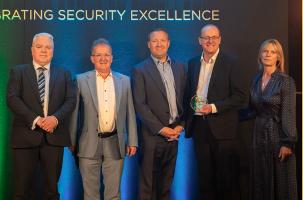
Founded by leaders in UK Construction and the British Safety Council to address the high levels of mental illness within the construction workforce . As a charity we now work to create positive mental health in and through work by campaigning for change in policy and procurement, directly supporting organisations through programs of training and consultancy, and through research in developing the evidence base on effective interventions.
Discover how we can support you: https://www matesinmind org/what-we-do



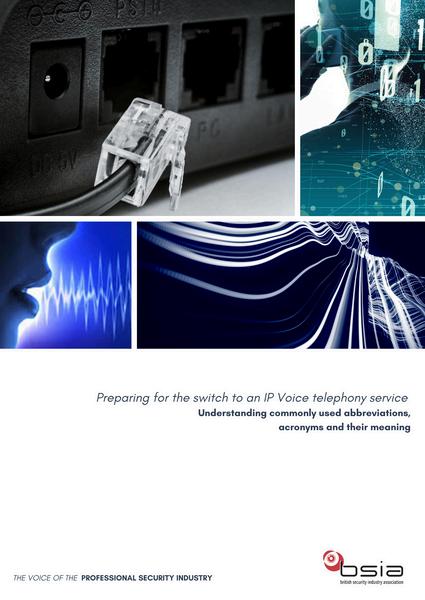
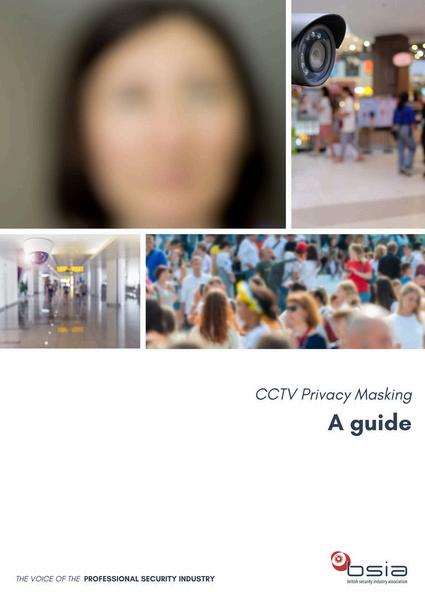




COMPILED BY BEN MOCKFORD

An opportunity to meet some of our key players rising through the ranks in our industry. C A I T L Y

Caitlyn joined Lodge Service a year ago as an apprentice, and her dedication and remarkable aptitude has enabled her to complete the entire apprenticeship in record time, finishing early and scoring top marks Her passion for the security field and incredible drive, along with her welcoming and energetic aura, has saved the business; scoring a contract that ensured future success at a difficult time

YOU
In my role, I handle client enquiries, engage with potential customers about our security services, and ensure the completion and submission of upcoming tenders My average day involves updating the pipeline and keeping all opportunities current. Additionally, I complete upcoming tenders and ensure the team is informed and aligned with necessary tasks to meet the deadline.
WHAT
DO YOU
FEEL IS
YOUR
GREATEST ACHIEVEMENT THAT YOU’RE PROUD OF IN YOUR ROLE?
My greatest achievement is winning the Best Newcomer award at the British Security Awards in London
WHAT
DO YOU LIKE MOST ABOUT YOUR JOB?
One of the aspects I enjoy most about my job is the collaborative team environment Additionally, I find great satisfaction in interacting with clients daily, assisting them with their security needs.
WHERE DO YOU SEE THE INDUSTRY AND YOURSELF IN FIVE YEARS?
I anticipate significant growth in the security industry as crime rates continue to rise While I believe that technical solutions will play a larger role in the future, the presence of security officers will remain crucial. In five years, I see myself expanding my professional network and exploring the marketing aspect of the business, I see myself leveraging social media to enhance Lodge Service's digital presence.
WHAT ADVICE WOULD YOU GIVE FOR SOMEONE COMING INTO THE SECURITY INDUSTRY?
I would tell them to build a strong network and connect with industry professionals, learn from people who have worked in the security industry and have many years of knowledge to be able to empower you. Networking can provide valuable insights and open new doors to opportunities.







Security shouldn’t just regard reacting to problems; instead, it should also be preventing and protecting them. Artificial Intelligence (AI) in security combines technological intelligence with human insight making big changes to the industry While AI continues to be monumental, the value of the human also remains paramount.
THE BSIA
VSS have witnessed an incredible shift with the incorporation of AI Traditionally, footage was captured and relayed to centralised systems for storage and analysis, however, security cameras are no longer just passive observers, becoming active analysts through the integration of AI. Video surveillance systems can detect suspicious behaviour or potential threats with higher accuracy; for example, distinguishing between a pedestrian passing by and a potential burglary
However, human oversight is very crucial for VSS. Contextual understanding interpreted situations and understanding intricate nuances are all ways in which humans provide further consideration
to circumstances and situations that AI may miss.
While AI-augmented VSS can anticipate and pinpoint potential threats with extreme precision, human discernment provides depth and observation within these occurrences AI deciphers patterns and irregularities; humans provide interpretive clarity and understanding
Access Control – securing entrances through trusted technology
With the advancement of artificial intelligence for access systems, key cards and/or codes have become intelligent algorithms and biometrics to ensure proficient security and efficiency. AI can analyse data from various sources to make access decisions with utmost accuracy
Human input is necessary for judgment on exceptional cases, ensuring that access decisions are fair and trustworthy. Furthermore, humans also play a
definitive role in creating and developing access policies and managing access control systems effectively.
For access control success, a delicate balance of technological innovation and human oversight is key.
Trust and transparency are necessary with access control systems, meaning human administrators must remain fair, consistent, and compliant with laws and regulations surrounding AI
Collaborative alarm systems through AI
Modern alarm systems leverage AI to reduce false alarms and focus on genuine threats Algorithms can analyse data that comes from sensors or other sources, detecting abnormalities or suspicious activity
Human intervention is often essential with alarm systems, particularly with evaluation of threats and appropriate responses Critical context and decisionmaking capabilities are not something that AI cannot replicate
With automation from technology and human intelligence being rife within the security, utilising algorithms and data analysis with contextual evidence is key for optimal performance – making AI and human approach an optimal solution

Alarm Receiving Centres (ARCs) use artificial intelligence to process incoming alarms with efficiency, prioritising them based on the level of threat AI analyses alarm data in real time, providing contextual evidence to help human operators making informed decisions
Human operators remain essential to ARC operations, using expertise to assess situations, coordinate relevant parties and take appropriate actions. The synergy between AI-driven insight and human decisionmaking is optimal for security responses.
Collaborating a humanitarian approach with AI is key for ARCs, as human operators remain indispensable for judgment and expertise; further benefitting from the streamlining that AI introduces to alarm management This creates optimal effectiveness and efficiency for ARC security operations
A collaborative future with artificial intelligence
As the security industry widens, influenced by AI and technological innovations, it’s important to remember that human influence is also crucial, creating a union with this technology With human involvement, these technologies and innovations will create harmony for VSS
Furthermore, human involvement with artificial intelligence will ensure that data remains protected and what should be private, stays private. Human values of ethics, trustworthiness and understanding are key with the ever-prevalent use of AI; and our advice ensures ethical compliance.
The integration of AI within the security industry shows a clear transformative shift on how we protect people, assets and information AI is revolutionising the way we detect, analyse and respond to security threats. It’s essential to also bring human oversight into these solutions, however, to provide judgment, ethics and intuition.

The collaboration between artificial intelligence and humanity creates powerful synergy; forming a dynamic partnership that not only enhances security but ensures that technological innovations remain humane Along with this, compliance with the EU AI Act will enable security companies to fully benefit the integration of new technologies, whilst ensuring they remain principled and congenital

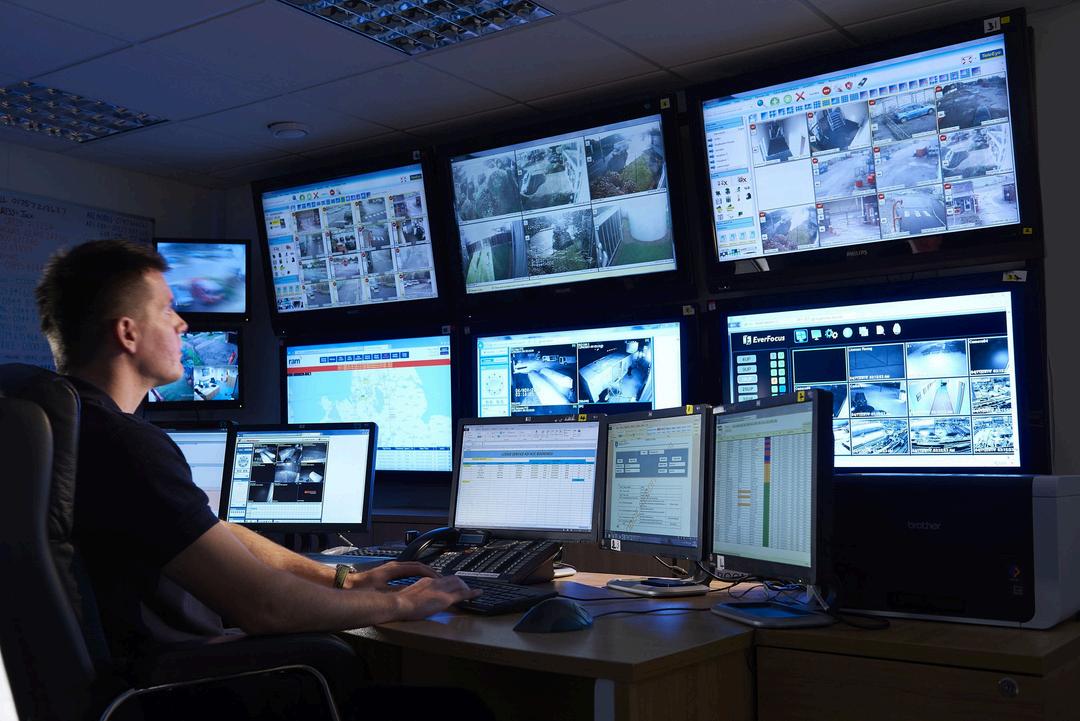

The growth of video surveillance systems has led to fixed and mobile cameras becoming more mainstream and affordable We often see these technologies in the form of wireless cameras, personal CCTV and smart doorbells The development of complex technologies and AI is also evolving the market of video surveillance.
Although there are ethical considerations for video surveillance, many businesses, organisations and even individuals at home believe this technology is a necessity in keeping themselves or their businesses safe. Advanced technology in video surveillance is helping deter crime and capturing offenders with systems with artificial intelligence (AI) and facial recognition technology (FRT)
Technology has advanced to phenomenal levels, and yet companies within the security sector are not catching up with it. This could be due to the nature of the business, costing, storage, or many other reasons which we will explore in this article
Video surveillance often faces scrutiny and concern due to privacy. Processes must be fair and lawful, and businesses should only handle personal data in a way that people would reasonably expect There are places where individuals may expect to see video surveillance systems, but organisations must ensure that those under surveillance are aware they are being recorded.
Transparency is the best way to ensure you are ethically utilising video surveillance systems Complying with data protection law means you must provide information about the surveillance to individuals who may be affected. Signs that are displayed in and near to areas with video surveillance is a great way to be transparent.
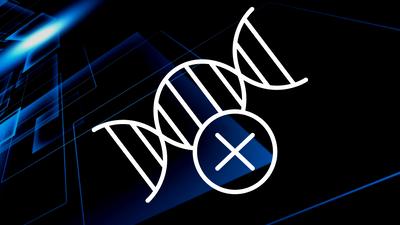
Video surveillance systems are a necessity for many businesses. These systems help improve overall safety by deterring criminals and providing necessary footage for conviction in the instance of a crime. Organisations must ensure that those under surveillance are aware they are being recorded.
Commercial surveillance systems can deter theft and other crimes With wellplaced video surveillance systems, businesses and organisations can monitor areas, help criminals think twice before committing a crime, and occasionally spot known offenders to prevent them from reoffending.
Of course, there are still instances where crimes may occur. However, with video surveillance, footage of offences can be used to arrest and prosecute criminals. Advanced video surveillance can provide reliable footage in these instances.
Facial recognition technology (FRT) is advanced technology that can identify or verify faces through images or video – whether recorded or captured in real-time. Many cameras have compatible biometric technology to capture facial features and metrics, providing extra security in the face of crime
Without making the most out of video surveillance systems, many users are not appropriately storing data Cloud storage (which is currently at 31% of users) is a beneficial way to integrate security data Without cloud-based systems, it is inefficient to analyse video which is recorded locally in multiple remote locations.

FRT is often use in security and law enforcement, including video surveillance installation With FRT and video analysis software, biometric data runs against a database of face images to identify individuals. This gives video surveillance advanced security benefits – particularly in sectors such as retail, organisations and office/manufacturing-based business.

This technology can identify suspicious behaviours, crimes, movements and other security risks to ensure businesses and organisations remain safe, and in the event of a crime or incident, offenders can be identified and prosecuted
As technology evolves, so does video surveillance However, commercial services aren’t as quick to adapt to technology, even with its advances – particularly in a such a sensitive industry Organisations need to be certain that new technology is beneficial.
Despite this, technology in the security industry is advancing at a rapid rate Artificial intelligence (AI) has been featured in surveillance for many years, and most modern cameras will have AI technology embedded Video surveillance systems use the most vetted and reliable technology solutions to advance their mission in keeping communities and organisations safe
Through our own extensive research, we have discovered several areas for significant improvement. Firstly, private enterprises are using video surveillance systems to benefit the safety of customers and employees. However, the public sector remains chronically underfunded – creating problems
Local authority including the police rely on an inefficient system of looking for video surveillance or running public appeals for evidence, then asking the users to hand over their recordings. This means that without private recording devices, many cases would not have the relevant evidence.
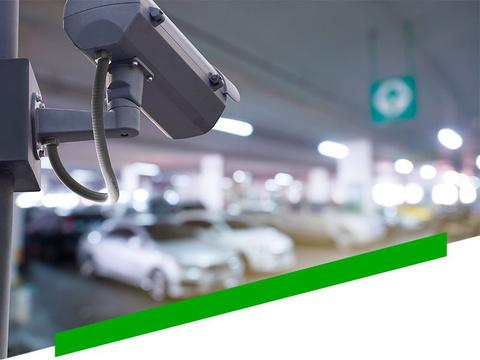
The Bigger Picture explored the primary and secondary use of video surveillance systems and the risks of these cameras The aim was to estimate the number of these devices within the UK, focusing on 11 key sectors and representing over 70% of the video surveillance market.
The research also quantified what type of cameras are typically used, the resolution of these cameras, whether they were analogue or IP technology and if these devices had embedded AI analytics The Bigger Picture investigated several key features, including storage methods, transmission mechanisms and the future of surveillance
From this research, it can be deduced that although technological advances are available to video surveillance systems, companies are slow to adapt them. With AI becoming taboo, companies are missing out on technology that can streamline inefficiencies, automate repetitive tasks and ultimately, provide more accurate data
AI applications can assess and analyse mass amounts of data. This can monitor critical security threats on cameras, providing even more security.



For this year’s International Women in Engineering Day, Techwuman have partnered up with the BSIA to celebrate the contributions of women in engineering and science, and their impact on the past, present and future of engineering
CHELSEA PEPLOW, BSIA MELISSA AHMED, TECHWUMAN
We aim to inspire the next generation of women to get into a career in STEM (Science, Technology, Engineering, and Maths), to continue breaking down barriers in the field.
What is INWED?

International Women in Engineering Day (INWED) is an annual event dedicated to recognising and celebrating the achievements of women in the engineering field It also aims to encourage women to consider engineering as a career choice, highlighting the importance of gender diversity in STEM fields
Founded by the Women’s Engineering
Society in 2014, INWED brings visibility to women in engineering, inspiration for the future generation of female engineers and advocacy for gender diversity and inclusion, in a field where women are underrepresented
Why should women get into engineering?
Crucial to the future of engineering and science, women engineers are involved in creating solutions to extremely pressing issues whether it’s the next generation of technology or building solutions for a more sustainable future
Diverse teams provide higher levels of innovation and creativity. With a mixture of different perspectives and problem-solving approaches, more effective and clever solutions can be provided.
Finally, it’s important to acknowledge that women are also underrepresented in the STEM field. Addressing the gender gap is key, and an increase in women in engineering provides the generation after them role models and mentors, promoting equity as representation increases
Women can enter and thrive in STEM careers through a combination of education, mentorship, and professional development T Levels and apprenticeships in the UK are helping to support women, by equipping them with the skills and knowledge they need to succeed
Techwuman aim to encourage the next generation of female engineers through STEM activity days These are focused in UK primary and secondary schools and are aimed ataddressing the longstanding skills shortage and aging workforce in the UK’s engineering industry. Providing pupils opportunities to think about careers early on, the initiative has been highly successful.





Challenging norms and inspiring the next generation are two key reasons why representation is important and why INWED should be celebrated When women are visible in roles traditionally dominated by men, it dismantles stereotypes about gender roles and capabilities. Furthermore, seeing women in diverse roles provides aspiration to an upcoming generation.

Today is a day for women to celebrate being strong females, being passionate about something, having a mentally stimulating job and most importantly contributing to improving not just our lives but the lives of our children and the children of the future We live in a digital era where we can impact the lives of others across the world through a variety of digital platforms. With the world at our fingertips let’s use it to celebrate this day.
Happy International Women in Engineering Day.
“Become an engineer and improve the world we live in” – Melissa Ahmed

Each quarter a member of the Association ‘interviews’ a member of the BSIA team on the current theme.
PAULINE NORSTROM CEO, ANEKANTA®CONSULTING AND ANEKANTA®AI

HOW LONG HAVE YOU BEEN N THE INDUSTRY AND WHY DID YOU JOIN?
I have been involved in the commercialisation of technology, such as video, analytics/AI used in security and safety applications across a range of sectors from retail to education, aviation, transportation, manufacturing, aerospace and law enforcement for over 20 years As an early pioneer and entrepreneur in digital and internet technologies preGoogle in the late ‘90s, I was introduced to the industry in the millennium as one which was undergoing a digital transformation and needing talent from outside the domain to catalyse the adoption of new technology The industry presented a number of challenges, for example, the reliance on out-of-date technologies despite the emergence of digital networks and remote access to data created the need
to build trust in the use of tech throughout the value chain. I also became involved in steering the use of immature AI technology in critical environments such as those for the MoD. My voluntary work with the BSIA developing guidance on emerging technologies complimented my corporate career as a statutory board director of a number of technology companies and created additional interest beyond commercial deliverables to the wider issues impacting a range of industry stakeholders from the Government to the public.
I am CEO of Anekanta® which I founded in 2016 I created the company from scratch, developed the business plan and growth strategies, designed its systems and processes, innovated its risk products, identified talent to drive our confidential AI risk projects and attracted the international customer base with a compelling value proposition As a startup it is normal for the CEO to be actively engaged in the development of the company and its relationship with the customer and stakeholders The job is split into two main areas – working on the development of the company ensuring the strategy and plan is executed effectively –and engaging outwardly to promote the success of the company – a key duty of a statutory director This outward engagement means working with a range of stakeholders, including customers and the ecosystem developing and using AI technologies such as the BSIA community I am a pioneer and leader in the introduction and adoption of new technologies Not only does my company provide services and products which research and assess strategic risk, it recommends
implementation strategies and a route to responsible AI adoption Historically, certain AI security technology has been operated within the exceptions allowed under GDPR, however as classic AI, GenAI APIs, cybersecurity, cloud storage and secure transmission have become robust enough to be trusted, the use for security technology is changing to the extent that a different approach to risk is required Furthermore, the user plays a far greater role in the technology decision process, and they are curious about how GenAI can bring competitive advantage to their wider business activities when combined with other security technologies such as object detection and FRT. My outward role is to engage, bringing the benefits in a way which creates new opportunities to support the growth of Anekanta® and the widespread safe adoption of AI technology.
WHERE DO YOU SEE THE INDUSTRY FROM AN ARTIFICIAL NTELLIGENCE PERSPECTIVE IN FIVE YEARS?
The technology used to improve the safety of the places people work and go about their daily lives is advancing all the time. Some geographies are more progressive than others with integration of AI, however I see the landscape levelling up as the industry understands the capabilities and limitations of ‘classic’ and GenAI better. This is achieved by becoming educated about ways to use AI safely with consideration towards liability throughout the complex value chain of developers. distributors, integrators, specifiers, service providers and users New skills are needed, creating employment opportunities for a variety of areas within the artificial intelligence sector, ensuring humans-inthe-loop are capable and accountable for the decision they make using AI outputs

Additionally, as power consumption, heat dissipation and processing power improves over time, GenAI processing at the edge may not only improve AI cybersecurity, but significantly enhance day-to-day activities in physical environments; through mobile devices and potentially through the use of lightweight augmented reality (AR) visors and body worn cameras, gathering and providing real time information directly from and to the front-line which is crucial to assessing the scene and facilitating a fast response in emergency situations AI regulation will stimulate the adoption of AI technology due to the clear guardrails it creates, which limit harms and reduce liability for the provider and deployer For example, through de facto and de jure ways of doing things which are traceable to source such as system logging. In contrast to the EU, the lack of UK AI regulation may confuse and potentially stifle the market; for example, the ethical and legal use of FRT is used widely by law enforcement with limited legal barriers, yet private industry is restricted, meaning some decision makers are considering changing their strategies to reduce the innovative use of the technology. I was instrumental in ensuring The BSIA’s proposal on FRT reflected the most current position on AI from the OCED. Pursuant to the guide, the new standard BS 9347, for the ethical use and deployment of FRT is a code of practice which operationalised the UK government’s AI regulatory principles and OECD’s guidelines The latter has been widely adopted into EU law and additionally form the basis of the new Council of Europe framework convention on AI and human rights, democracy and the rule of law, of which UK is a member To support the AI ecosystem, independent companies like Anekanta® are needed.
As CEO of a Responsible AI company which promotes the beneficial use of classic, GenAI and biometrics technologies in security and other business processes, across a range of sectors, Anekanta® has already achieved international recognition in the industry, Government, Responsible AI domain and through its customer base which spans several sectors
The industry is one which operates horizontally, and for which AI creates opportunities for cross-functional integration to solve problems, and in doing so extends the concept of a security industry beyond the traditional definition. Ever increasing digitalisation, cybersecurity mitigations and IoT capabilities open the door to new opportunities, and I see the use of AI technology resulting in physical and logical operational process integration creating a wide range of further opportunities for Anekanta® and its partnerships to support the safe, profitable use of the technology
meeting notes and lists of actions from video calls A number of organisations have banned the use of public GenAI models due to security and intellectual property concerns; it may seem obvious that personal and commercially sensitive data should not be input into a public model, however the lack of understanding of the basic workings of a large language model have caused serious data breaches which some companies have quickly addressed
It is important to recognise that personal productivity tools such as Claude, Gemini, ChatGPT, etc, do not necessarily present the same risks as an AI technology used to categorise people by biometric data, or the use of an open source LLM deployed inside the firewall alongside a knowledge base to generate accurate and contextually relevant outputs. The risks, also the benefits of AI technologies are dependent upon how they are trained, how secure they are, who is using them and for what purpose For any business, defining the purpose and scope of the AI, understanding the problems it may solve, setting policy, engaging the stakeholders and responding to regulatory requirements and implementing de facto standards will help to increase the benefits of the technology and reduce the range of risks it presents to businesses and their stakeholders
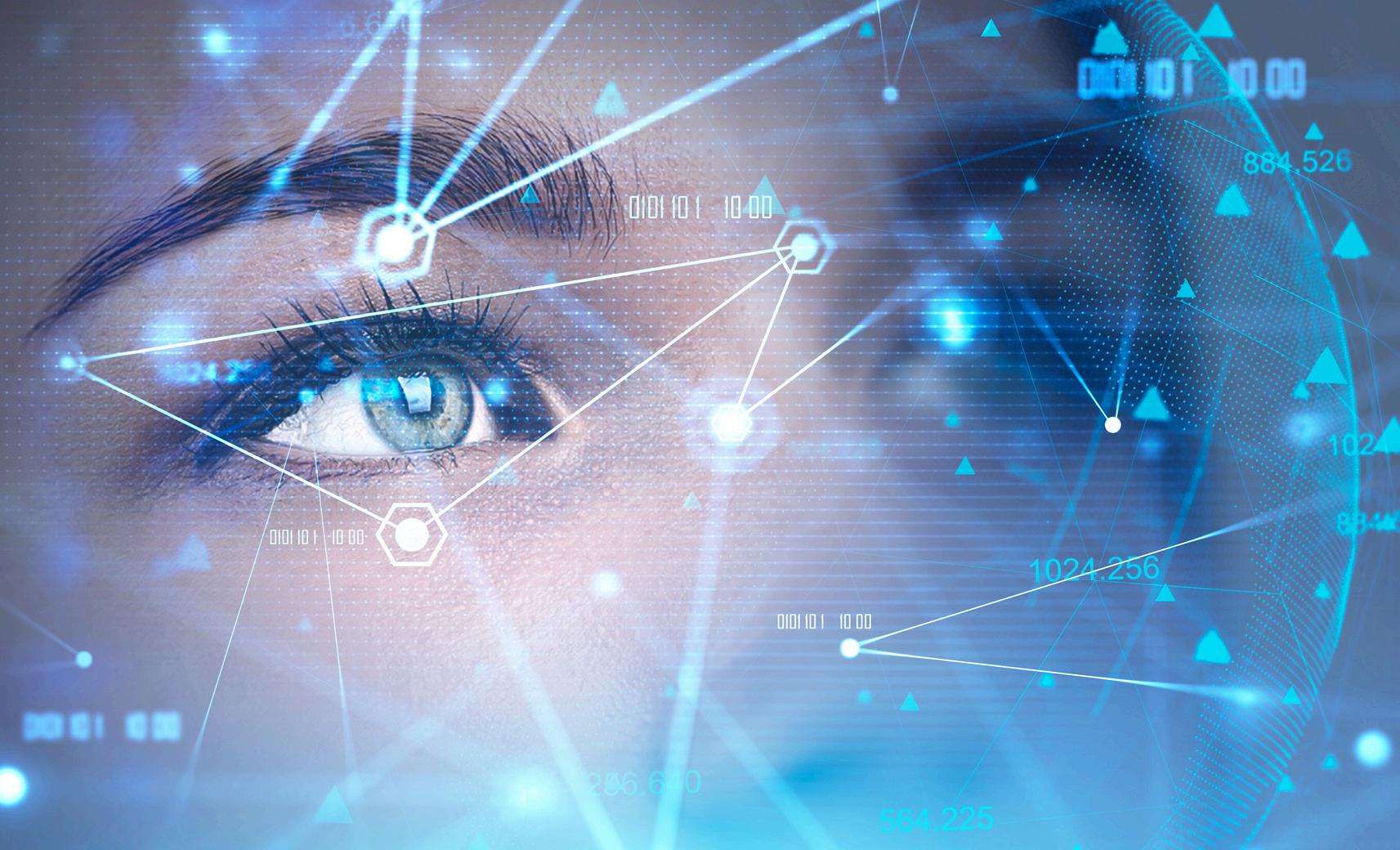
This depends upon a number of factors such as the type of business, its size, jurisdictions in which it operates and the sectors it serves The start point for most businesses is to understand what AI actually covers It is not just one thing and can include a range of technical processes combined to form an AI system. AI use cases tend to be driven by a cost: benefit and risk discussion Business leaders should consider auditing and understanding what AI systems are in use from Co-Pilot/OpenAI within Microsoft applications which make text and structure recommendations, to transcription software which creates

